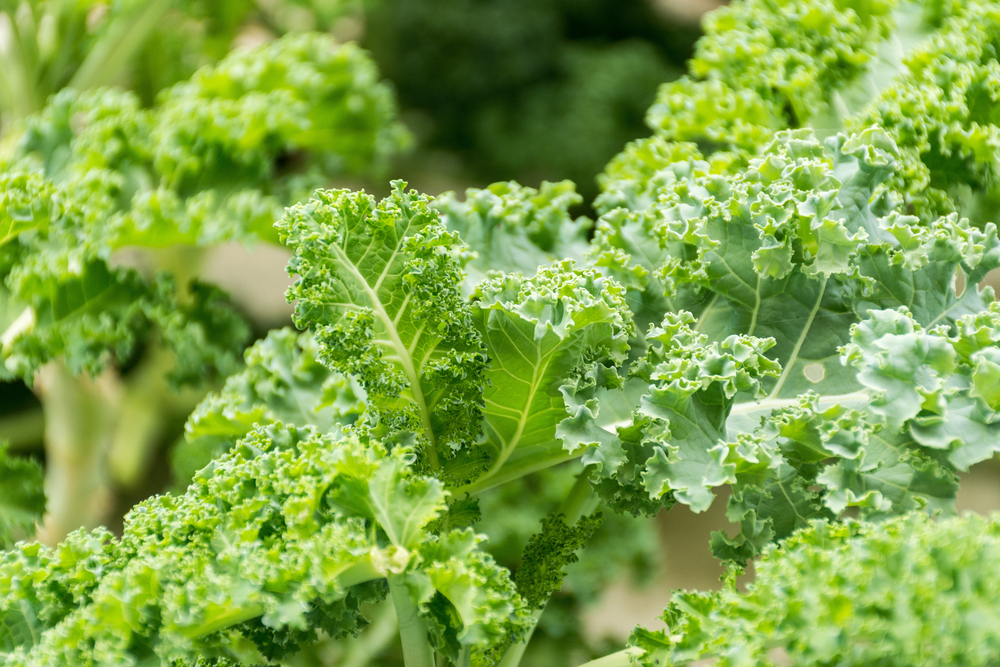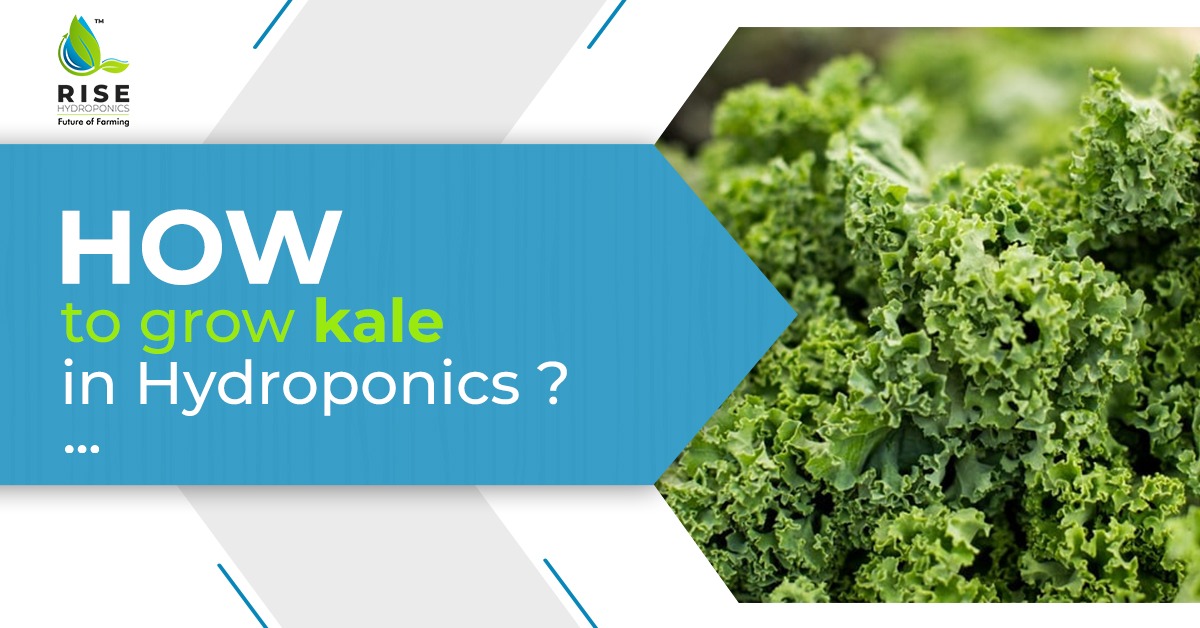Kale has been the healthiest green of choice with all the nutrients and vitamins. This richly flavored green steals the spotlight in food marts and fancy kitchens. But we totally recommend growing kale for those who look forward to trying hydroponic farming at home or commercially. It would make for a great crop to start farming with, but the hydroponics system makes Kale cultivation an easy and rewarding process.
Without much hydroponic farming training in India, you can grow your own kale to ensure you have access to the cleanest and freshest greens. Also, you can enjoy fresh kale all through the year regardless of the season.
Choose the ideal hydroponic system for growing
Two fundamental hydroponics systems work best for greens like kale. The first one is DWC or Deep Water Culture, and the other is NFT or the nutrient film technique. In DWC, you transplant the seedlings into rafts. These rafts are then floated on a constructed pond that measures 6-12 inches. The pond consists of nutrient solutions in large volumes.
You add a water pump that helps in water circulation throughout the pond. However, you have to install an air pump to aerate the system. NFT is another hydroponics setup where you transplant seedlings onto shallow channels.And, in these channels, a thin film of the nutrient mix is circulated all the time.
In a hydroponics farming method like NFT, you have to slope the channels at a specific angle, 1-4 percent away from the center. This design helps the channels drain at the ends to return to the reservoir.
The DWC system offers its share of benefits. But, the most pronounced one is the large volume of water used. Do you know that quick changes in water temperature are avoided because of the large water volume used in DWC? Not only that, but this system also avoids changes in nutrient solution, electrical conductivity, and pH compositions.
The Kratky method is also gaining massive popularity due to its ease and effortless installation. You can easily manage and control it. This method will provide all the advantages of a hydroponics system without being tedious.
In this system, you place the plants in the net pots with an ideal medium of growth. The roots of the plants are partially exposed to air while the lower part stays submerged with the deep-water reservoir. Each of these systems has its own usability and benefits. Your selection will depend solely on your suitability.
How to get started? Use cuttings or seeds

Getting started with Kale seeds
According to experienced hydroponics growers, cultivating seeds is the best choice. After all, it feels satisfying when the seeds mature into full-grown kale plants. Hydroponics has complete control over elements. Thus, it is the best system for getting started with seeds. Here are the steps to plant the seedlings.
- Germinate the seeds at 15.5 – 24 degree Celsius degrees Fahrenheit. Lower temperatures may work too. But, they may slow the process of growth.
- Keep the environment temperature at 7.2-29.4 degrees Fahrenheit after germination and humidity around 55-65%.
- Keep the pH between 5.8-6.3 and the temperature of water between 65 -70 degrees Fahrenheit.
- Use a hydroponics nutrient solution specially formulated for kale. That is because the plant has its own nutrient needs.
- Lastly, make sure your kale grows in cooler temperatures. Ideally, anything between 24-28 degrees Celsius works best for kale. Lower temperatures produce smoother flavor besides kale is a ‘cool-season plant.”
Hydroponic nutrient and fertilizer solution for kale
Maintain the pH of the nutrient solution between 5.5-6.5. Some leafy veggies like broccoli and kale are sensitive to nitrogen. However, if the nitrogen levels are too high, the leaf tips can burn. Remember that plants need nitrogen, but excess of it can be harmful.
Make sure your solution is not devoid of magnesium sulfate or calcium. But, if it is, then supplement it with the mentioned nutrients. Here are a few things that will help you to manage the nutrient solution in a better manner.
Monitor the nutrient solution’s EC.
You must monitor the nutrient solution’s EC. Frequent EC monitoring helps to adjust the EC levels before things take a terrible turn. Low or high EC affects the plant’s nutrient uptake volume.
Measure the nutrient solution’s temperature
High temperature reduces the solution’s oxygen holding capacity drastically. Plants absorb a significant percentage of oxygen from the roots, which is mandatory for root development.
Optimum Growth Environment for Kale

Temperature
To grow healthy kale, you must maintain a temperature between 16-24 degrees Celsius in your hydroponics farm.
EC and pH range
Kale possesses an extensive range of electrical conductivity. Thus it is less susceptible to EC changes. For optimum growth of the kale plants, the EC should be around 1.6-2.5. The pH of the nutrient solution should be about 5.5-6.5 for the plant’s better growth.
Lighting
You can opt for an indoor hydroponics setup for an artificial lighting condition. Infra-red light can increase the plant’s yield; however, a combination of infra-red and green can also do wonders.You must incorporate a suitable growlight for your hydroponics farm.
Spacing
Kale requires ample space to ensure that all parts of the plant get enough light. Thus, when you plant kale, try keeping them half a foot or one foot away from one another. This technique will ensure that none of the plants stop getting enough light vital for growth.
When and how to harvest hydroponic kale
You can harvest young kale crops by 20-30 days after they are transplanted. However, it will take 3-4 months to harvest fully mature kale. But, a lot depends on the growing conditions and the variety of kale.
Overall benefits of Hydroponic Kale
Right from smoothies to salads and other healthy recipes, kale has become a popular plant. It is rich in vitamins K, C, B, and A; and minerals like potassium, phosphorus, manganese, magnesium, copper, iron, and calcium.
It has more omega-3 fatty acids, protein, and antioxidants than many veggies. Kale is called a superfood because it is enriched with minerals, vitamins, and other nutrients.
Kale helps to strengthen bones, boost the immune system, improve eyesight, and helps to prevent the spread and growth of some cancers.
The significant benefit of hydroponic kale is that it can be harvested and grown all through the year in indoor microclimates. Thus, you can enjoy the freshest kale at any time of the year.
Parting thoughts
Kale has become an essential crop for most vegetable growers because it is a nutritious and versatile leafy green. But, the best news is that indoor farming of kale in a hydroponics garden results in mind-boggling production of the crop. So, what are you waiting for? Begin to grow kale by whipping out your green thumb today!

